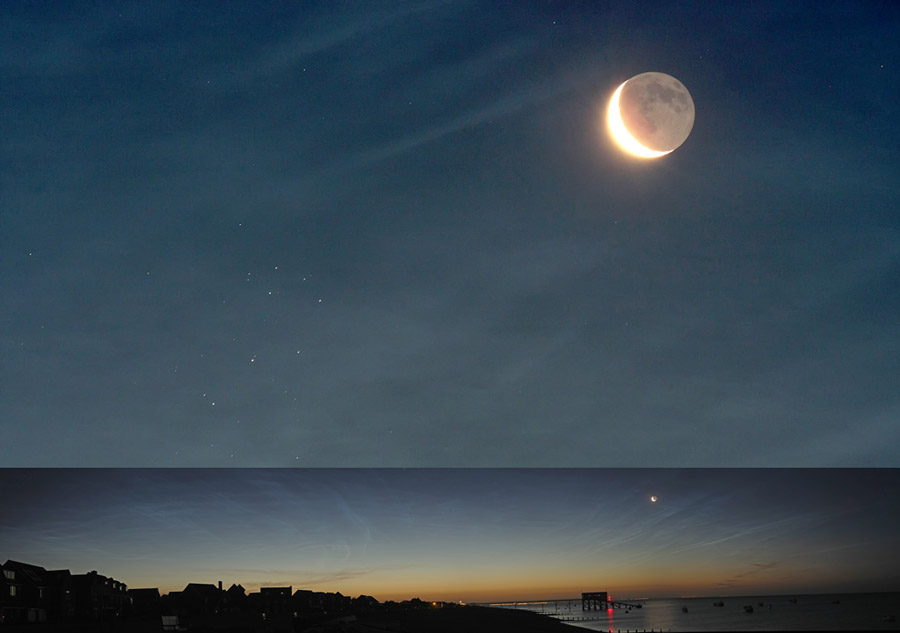January 1, 2018
Worlds in Evolution
Originally published July 3, 2008

images by Pete Lawrence, Selsey, England
The Earth-lit Moon is a familiar sight, but seeing it near the Pleiades and with noctilucent clouds (NLC) in Earth's upper atmosphere is a rarer treat. Adding the ocean with nearby rooftop silhouettes and a sunrise glow on the horizon makes a memorable view. I thought of the many worlds represented here. The Pleiades is a young star cluster, with nearly a thousand stars only about 100 m.y. old. When our Sun was that young, the Earth, Moon and other planets had already formed and were experiencing tempestuous times with hyper-active volcanism and impact cratering. Our Moon, here bathed in light reflected from our cloud-rich atmosphere, has preserved what that early history looked like in its heavily cratered highlands. The Earth is dominated by water and life, represented by the ocean, atmosphere and rooftops. Our human life is rapidly altering the physical nature of the atmosphere greatly increasing the number and brightness of water ice clouds 80 km up. Since 1980 the NLC have increased in frequency by 28%. The reason is not clearly known, but is thought to relate to global warming, which cools the stratosphere, perhaps accounting for the observed increase in ice crystals. NASA's AIM satellite is documenting very extensive masses of NLC. July is the best time to see NLC - take a look if you live in high to mid-northern latitudes.
Chuck Wood
Technical Details
June 30, 2008. Canon 40DH camera with a couple of telephoto lenses (50-500 and 28-135). The camera was attached to a fixed tripod.
Related Links
CBS News video on NLC
Yesterday's LPOD: Inside Orientale
Tomorrow's LPOD: X-Raying Imbrium
COMMENTS?
Register, Log in, and join in the comments.



